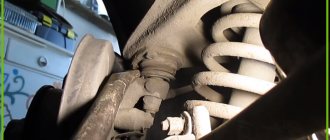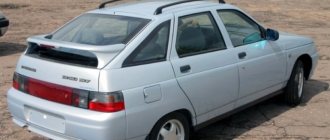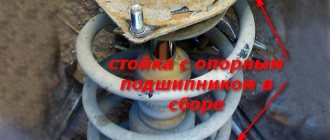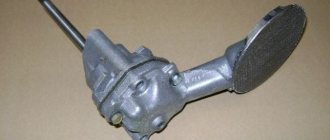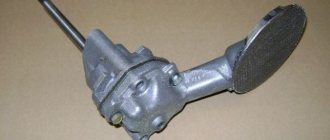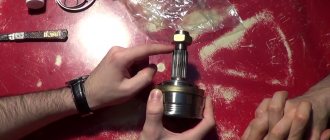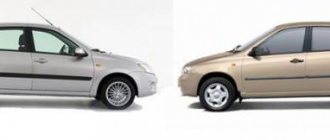The ball joint is one of the most important components of the front suspension of front-wheel drive cars, including the Lada Kalina. The main purpose of the ball joint is to be the connecting link between the steering wheel hub and the suspension arms. That is, during vertical movement, the hub rotates, but the horizontal position of the wheel remains unchanged. The condition of the ball joint should be carefully monitored. Otherwise, there is a high probability of serious consequences, especially if the breakdown occurs while driving. If the ball joint fails, the wheel will turn outward and the car is guaranteed to fall onto the wing. If you imagine such a situation at high speed, there is a high probability that its development will lead to a serious accident.
Characteristics of the ball joint on the Lada Kalina
This unit holds the wheel in a certain position, while at the same time allowing the hub to rotate and maintain horizontal stability. The ball joint is called because of the ball-shaped tip. Structurally, it is a cone-shaped unit.
The Lada Kalina uses a modern collapsible element, although the first VAZ models had stamped assemblies from several parts, and then cast structures. The ball joint installed on a Lada Kalina car, regardless of modification and generation, has a standard device that includes several main components:
- frame;
- a part in the form of a cone (another name is “finger”);
- rubber protective boot (prevents dirt and dust from entering).
The main elements are made of high quality steel. This is due to the fact that during operation the working parts are constantly exposed to load, friction and, as a result, high temperatures. The only exception is the hollow part of the body, which is covered with polymer materials. Plastic is mainly used for these purposes.
The main advantage of the Kalina ball joint is the extreme simplicity and efficiency of the design, which allows the contacting parts to move freely at equal angles.
Looking at the structure of the ball in more detail, it can be noted that it is actually a steel finger, which on one side ends with a tip in the form of a small ball. The tip rests on a plastic (or polyurethane) gasket. The bushing and ball end are located in the body and are rolled to prevent flyout. The body is additionally galvanized against corrosion. It is fixed to the upper or lower control arm and the threaded part is secured with a knuckle nut. Thanks to this, the fist is not fixed too tightly, which allows it to rotate along with the wheel hub, and the vertical position is maintained when the vehicle’s suspension is operating.
The ball joint is a fairly reliable and durable unit if you follow the operating rules. The long service life of the ball joint is possible thanks to the lubricant located in the part of the housing where it comes into contact with the working part. Insufficient lubrication, its leakage and moisture entering the internal cavity can cause premature failure of the entire assembly. To protect the working parts, a special boot made of rubber that is resistant to aggressive environments is used.
In order for the ball joint to last as long as possible, every car enthusiast should check the condition of the suspension from time to time, paying special attention to the rubber boots. There should be no cracks or other visible damage on their surface. If there are defects, it is recommended to check the condition of the entire assembly for wear.
How to check a ball joint
If you experience symptoms of a ball joint malfunction, you should use the services of a service or conduct an independent check. True, you can’t do without a lift or jack.
- Inspection . The visual condition can say a lot about the position of the spare part: cracks in the boot are a clear sign of a clogged unit.
- Wiggle . If no visual defects are found, you should grab the edges of the wheel and swing it vertically. It should be noted that the breakdown will only appear in a certain position, so it is better if someone turns the steering wheel. Again, backlash may indicate other problems.
- Check with a mount . The flat end of the mount is inserted into the gap between the lever and the pivot pin: if you press on the handle, you can check for play or clicks, which are easily transmitted to the handle.
Some models have diagnostic holes for this purpose, through which it is easy to measure wear. Still, it is worth noting that the final diagnosis can be made when the support is removed. It is enough to move the tip to the sides and make sure there is play. Timely diagnosis of supports is very important, as this can protect against accidents on the road.
Diagnostics of ball joints and reasons for their failure
Like all budget front-wheel drive cars, the Lada Kalina is equipped with a MacPherson-type front suspension. Briefly, the design consists of an upper support in the form of a strut with a shock absorber and a spring, and a lower support in the form of a wishbone. This lever is connected to the wheel hub (via the steering knuckle) using a ball joint. The design is elementary and therefore reliable, but the presence of moving elements makes diagnostics a difficult task, requiring certain skills and knowledge.
Signs of a ball joint malfunction
The most common symptoms of problems with this unit include the following:
- when driving at low speed over uneven surfaces, a knock is heard from the front suspension;
- when turning the steering wheel, a slightly greater force is required;
- when turning the steering wheel, the front suspension begins to creak;
- Tires wear out differently;
- The car pulls to the side when driving in a straight line.
But it is impossible to diagnose only a ball joint based on these signs, since these same symptoms may indicate problems with the shock absorber strut, wheel bearing or suspension arms. There are a number of methods for independently identifying faults that are not very complicated.
Options
Performance
It should be taken into account that on non-original supports there are special diagnostic holes that allow you to determine how worn the tip is. In addition, you can find out about problems with the ball by looking at the condition of the protective boot. Even small cracks can cause grease to leak and dirt and dust to enter. As a result, this results in accelerated wear of the unit and a significant reduction in service life.
Department of Pediatric Diseases: Datsun on-DO
It is worth recognizing that not all Datsun on-DO malfunctions were confirmed by the official representative office. However, some problems with the model are actually recognized, but brand specialists told us how they are eliminated - and whether they are relevant at all.
Loud noise when operating the air conditioning compressor
Some on-DO owners complain that their car hums like a tractor. Someone, on the contrary, is happy and jokingly says that the car sounds like a supercar. This noise can be characterized in different ways, but it has one source: it is the air conditioning compressor. Owners often note that when the air conditioning is turned on, the car makes strange sounds - as if something is touching something under the hood.
The official Datsun representative office confirmed to us that this really happens—or rather, it has happened. “As it was revealed, this noise is due to the design of the air conditioner pipes when the compressor operates. For car owners, a warranty replacement of the pipe with a pipe with a muffler was introduced; for new cars, a design change was introduced in production. This issue was resolved at the end of 2014, that is, at the start of sales, and is not relevant today,” the representative office assured.
Gearbox hum
But the Datsun inherited this sound from its Russian relative, the Lada Granta. There are already legends about the VAZ manual gearbox and its vocal abilities. The characteristic hum is very easily recognizable from thousands and has not gone away for many years, even though the design of the box was updated: a cable drive was installed, and the equipment was changed to improve the quality of the gears, but the box continues to “sing”. on-DO received the same mechanics - accordingly, the character of the box has not changed.
“The hum is a feature of this gearbox; we see the reason in the design of the gearbox, namely in the profile of the gear teeth. In mid-2021, a measure was introduced to reduce manual transmission noise, which consists of changing the profile of the teeth of the second and main gears, where the noise is more pronounced. Thus, it was possible to significantly reduce the noise level of the manual transmission,” the representative office notes.
However, this hum probably cannot be called a full-fledged “childhood disease” - rather an annoying design feature. But the manufacturer, it turns out, is not sitting idly by and is finalizing the design.
Yes, and again - noise! It turns out that the on-DO “sick” is quite noisy. Another source of excessive engine compartment noise may be the generator - according to some owners, the tensioner pulley begins to “sing.” The official representative office, however, notes that there are no problems with the generator on currently produced cars, and on slightly older cars there are no problems with warranty replacements.
“When dealing with a generator noise issue, the dealer must check all parts and, if faulty, replace them under warranty. For new cars, this particular issue is not relevant today,” Datsun said.
Ball joints creaking
However, the representative office did not confirm some faults in the official commentary - for example, rapid wear of ball joints. Meanwhile, owners quite often pay attention to squeaks in the front suspension and talk about cases of warranty replacements.
However, Datsun notes that they are constantly working to improve the model and collect complaints from owners. “We collect statistics on customer requests, study feedback from dealerships, and work closely with production. Despite the fact that during the three years of project preparation, colossal engineering work was carried out to configure and refine the technical part of the models, the base on which our cars are built has room for improvements and the elimination of hereditary features. The fact that we have achieved positive changes in any issue does not mean that we stop monitoring it in the future. Despite the positive results, we are analyzing deviations that may be causing increased noise, holding negotiations with Alliance colleagues and discussing what else can be done in this direction. Also, many issues are resolved at the level of adjustments in production for new cars and at the level of contacting the dealer for those already sold,” says Datsun.
Of course, the owners of classmates and competitors can gloat and be in full confidence that they definitely made the right choice and bought the most reliable and problem-free car. But perfect cars don’t exist, and the fact that your favorite model hasn’t appeared in this section yet means only one thing: we just haven’t gotten to it yet.
Selection of ball joints for Lada Kalina
Its front suspension is not much different from previous VAZ models, for example, Priora, Samara, etc. The chassis of different generations of Kalina itself does not stand out fundamentally. On the first generation and on Lada Kalina cars of 2 different modifications, ball joints with catalog number 21100-2904192-82 are installed, and for supports with a set of fasteners, catalog number 21100-2904192-86.
The modern auto parts market offers customers different types of supports. The first are original (welded from several parts), and the second are stamped and reinforced. Structurally, all these hinges are arranged identically. The only differences are in the manufacturing technology and quality of the steel used, as well as its thickness. This determines the strength of the products, their durability and, of course, cost. In terms of size and principle of operation, they are no different from each other. From this we can conclude that the question of choice is not fundamental and depends on the personal preferences of the car owner.
Experienced car enthusiasts, as well as auto mechanics, recommend using exclusively original components. Only by choosing the original, you can be guaranteed to obtain the declared quality, reliability and long service life. However, as practice shows, original spare parts are sometimes much more expensive than analogues, so most car enthusiasts prefer to use the second option.
When choosing analogues, you need to approach the issue carefully and responsibly. You should not choose very cheap spare parts from an unknown manufacturer, and you should also not take components from markets, unknown points, or simply from your hands. Before purchasing, you should carefully inspect the components. There should be no visible welds on them; the surface should be gray, which indicates heat treatment of the part.
The components must have an emblem and a quality mark. As a rule, fakes do not have this.
Indirectly, quality is indicated by holograms on the case or packaging of components, as well as an additional set of fasteners. The cost of a ball joint for Kalina usually does not exceed 500 rubles. It's inexpensive, but it's worth considering that purchasing units for tuning can be significantly more expensive. For example, those from Pasker are valued tens of times higher.
Replacing a ball joint on a Lada Kalina
The instructions for carrying out work on the first generation Lada Kalina and the “two” are no different. This does not depend on the modification, for example, sedan, station wagon or hatchback (cross). You can do everything yourself. To do this you will need the following set of tools:
- wrenches or socket heads 17 and 19;
- TORX E12 head;
- special puller for ball joints.
You may also need a torque wrench to ensure optimal tightening of nuts and bolts, a pry bar, and a hammer to knock out the pin. As for the TORX E12 key, it can become useful when working with a ball joint on Kalina 2, where this fastener is used for fastening to the steering knuckle, and not a 17 bolt, as on Kalina 1st generation.
Rules for removing the ball joint
Before starting work, you should raise the parking brake lever all the way and use the jack to hang the desired wheel. The further process is as follows.
- Using a socket or a 19 mm wrench, unscrew the fastening nut, thanks to which the ball end is mounted on the wishbone.
- Use a special puller to remove the conical pin from its seat in the body.
- Using a 17 wrench (on Kalina 2, a TORX wrench), unscrew the fastening bolts that secure the ball to the hub knuckle.
- Using a pry bar, lower the lever lower. This will give you access to remove the ball joint.
To make the task easier, you can pre-treat the bolts and nuts with VD 40 or any similar liquid. This is true in some cases, but usually there are no problems with unscrewing nuts and bolts. If there is no puller for ball joints, you can remove the pin in another way:
- loosen the nut and leave it on the tip;
- Use a mounting spatula to press the lever from top to bottom;
- Use a hammer to knock the pin out of the body, thereby pressing it out of the seat.
If desired, the ball can be visually inspected and tested for compliance. To do this, the assembly is clamped in a vice. And with movements in different directions, the axial and other play of the finger in the socket is checked. The play should not exceed 0.7 mm; if there are large deviations in this indicator, the unit should be replaced; the ball joint cannot be repaired. If it is in order, but the rubber boot is damaged, you can only get by by replacing it. To do this, the support is dismantled and the boot is removed from it; before installing the cover, it should be filled with a suitable lubricant and fixed to the support.
